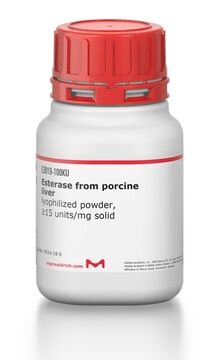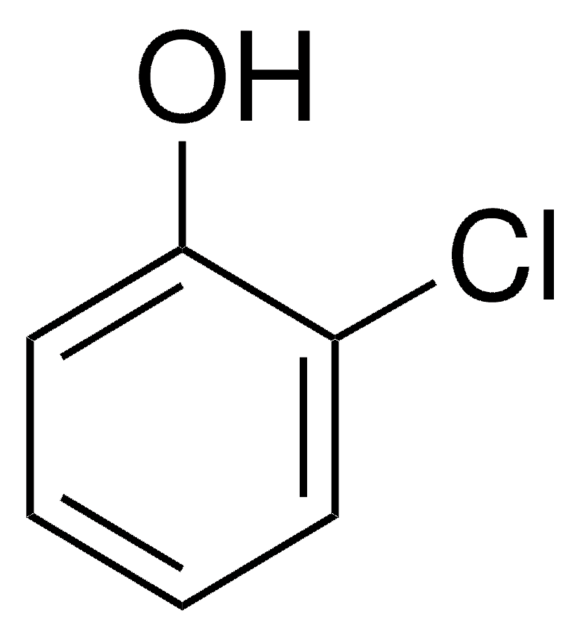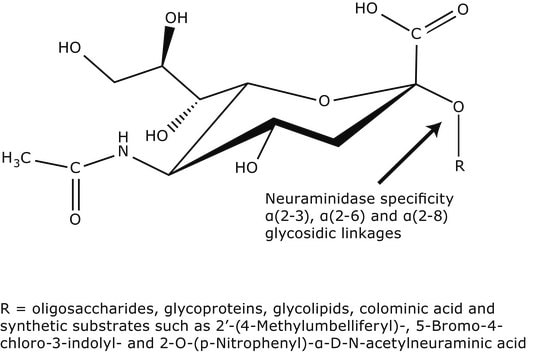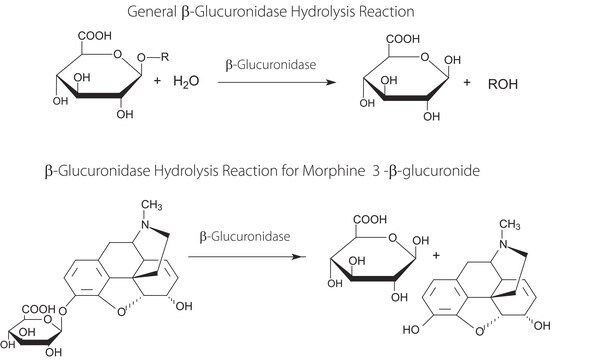46058
Esterase from porcine liver
lyophilized, powder, slightly beige, ≥50 U/mg
Synonym(s):
Carboxyl esterase, Carboxylic-ester hydrolase, PLE
About This Item
Recommended Products
biological source
Porcine liver
Quality Level
form
lyophilized solid
powder
quality
lyophilized
specific activity
≥50 U/mg
mol wt
Mr ~162000
color
slightly beige
storage temp.
−20°C
Looking for similar products? Visit Product Comparison Guide
General description
Application
Pig liver esterase is commonly used for kinetic resolutions and assymetric synthesis in organic chemistry.
Biochem/physiol Actions
Components
Unit Definition
Other Notes
signalword
Danger
hcodes
pcodes
Hazard Classifications
Resp. Sens. 1
Storage Class
11 - Combustible Solids
wgk_germany
WGK 1
flash_point_f
Not applicable
flash_point_c
Not applicable
ppe
Eyeshields, Gloves, type N95 (US)
Certificates of Analysis (COA)
Search for Certificates of Analysis (COA) by entering the products Lot/Batch Number. Lot and Batch Numbers can be found on a product’s label following the words ‘Lot’ or ‘Batch’.
Already Own This Product?
Find documentation for the products that you have recently purchased in the Document Library.
Customers Also Viewed
Our team of scientists has experience in all areas of research including Life Science, Material Science, Chemical Synthesis, Chromatography, Analytical and many others.
Contact Technical Service











